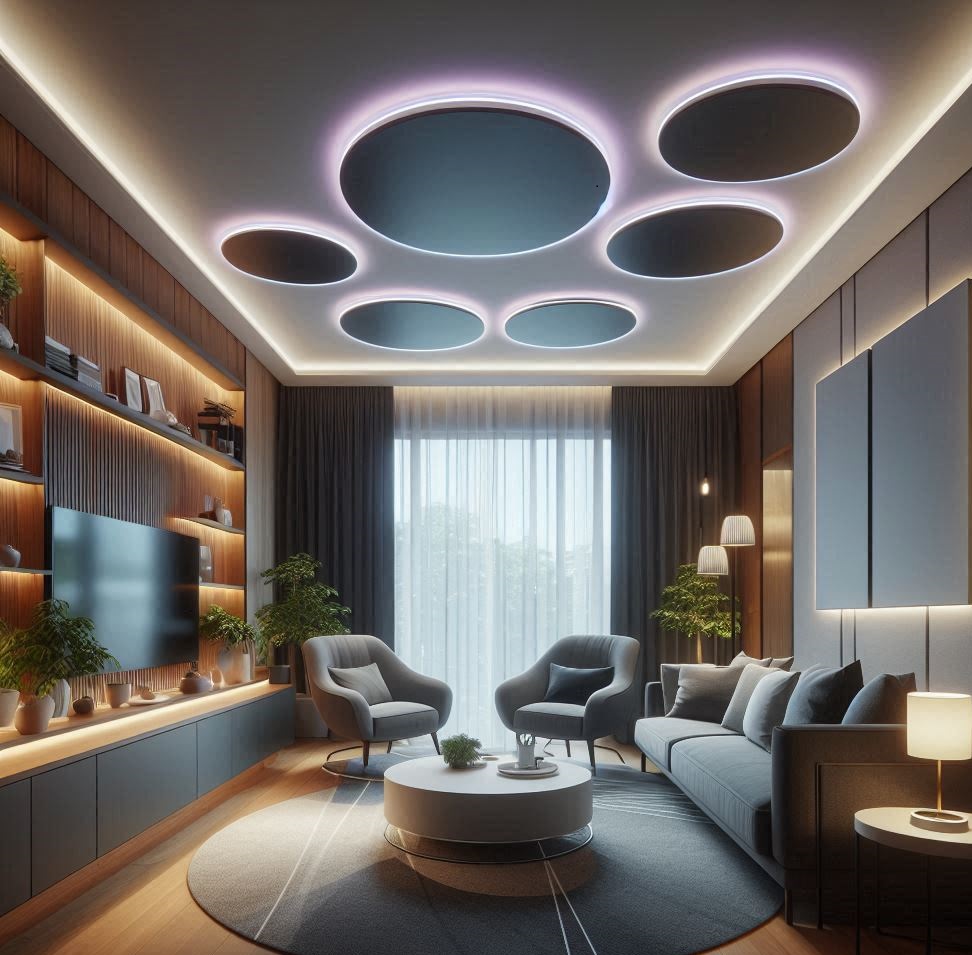The future of smart lighting is poised for significant advancements, driven by technological innovations and the increasing demand for energy efficiency, convenience, and enhanced user experience. Here are the key trends and developments shaping this sector:

Integration with IoT and Smart Buildings
Smart lighting systems are becoming integral to the Internet of Things (IoT), allowing for interconnected environments where lighting interacts seamlessly with other building systems such as heating, ventilation, and air conditioning (HVAC). This integration supports the creation of “smart buildings,” which optimize energy use and enhance user comfort. For instance, smart lighting can automatically adjust based on occupancy levels and natural light availability, leading to energy savings of up to 80%.
Enhanced Control and Customization
Consumers are increasingly seeking lighting solutions that offer remote control and automation through smartphones and voice assistants. This includes features like adjustable color temperatures, dimming options, and the ability to create customized lighting scenes. Such flexibility not only improves user satisfaction but also supports energy efficiency by allowing users to tailor lighting to their specific needs.
Energy Efficiency and Sustainability
The shift towards LED technology has already made a significant impact, with smart lighting systems further enhancing energy savings. These systems can adapt based on real-time data, reducing energy consumption and lowering carbon footprints. For example, intelligent street lighting systems can adjust brightness based on traffic patterns, contributing to overall sustainability efforts in urban planning
Health and Wellbeing
Smart lighting is increasingly recognized for its potential to improve health and wellbeing. Human-centric lighting designs that mimic natural light can support circadian rhythms, enhancing productivity and comfort in both residential and commercial settings. This focus on wellbeing is particularly relevant in post-pandemic environments, where flexible and comfortable working conditions are essential.
Future Innovations
Looking ahead, advancements in artificial intelligence (AI) and machine learning (ML) will enable even smarter lighting solutions. These technologies can analyze usage patterns and adjust lighting automatically, improving user experience and operational efficiency. For instance, smart systems could learn when meetings typically occur and pre-adjust lighting conditions to suit those needs
The future of smart lighting is bright, characterized by enhanced connectivity, energy efficiency, and a focus on user wellbeing. As technology continues to evolve, smart lighting will play a crucial role in shaping sustainable and intelligent urban environments, making it an essential consideration for future building designs and city planning initiatives.
Frequently Asked Questions
Q. How will smart lighting integrate with AI and machine learning in the future
A. Smart lighting is set to undergo transformative changes through the integration of artificial intelligence (AI) and machine learning (ML). This evolution will enhance user experience, optimize energy consumption, and create adaptive lighting environments.
Q. What are the key benefits of smart lighting for commercial buildings
A. Smart lighting enhances commercial buildings by improving energy efficiency and reducing costs through optimized lighting based on occupancy and natural light. It boosts employee productivity and wellbeing by simulating natural light, while also enhancing security with motion sensors. Additionally, the data generated allows for informed decision-making, and in retail settings, it creates inviting atmospheres that elevate customer experiences. Overall, smart lighting is a vital investment for operational efficiency and sustainability.
Q. How does smart lighting contribute to energy efficiency and cost savings
A. Smart lighting enhances energy efficiency and cost savings by using automated controls, occupancy sensors, and daylight harvesting to ensure lights are only used when needed. Incorporating energy-efficient LED technology and IoT integration further optimizes energy consumption, potentially reducing usage by up to 70%. This combination leads to significant reductions in energy costs and maintenance expenses.
Q. What role does IoT play in smart lighting systems
A. The Internet of Things (IoT) enhances smart lighting systems by enabling remote control and automation, allowing users to adjust settings based on preferences and environmental conditions. IoT facilitates real-time monitoring, optimizing energy efficiency by reducing consumption through occupancy detection. Additionally, it collects valuable data for insights into usage patterns, supports smart city initiatives, and aids in asset tracking, contributing to overall operational efficiency.
Q. How can smart lighting improve human-centric design and wellbeing
A .Smart lighting, particularly Human Centric Lighting (HCL) systems, enhances wellbeing by mimicking natural light patterns. HCL adjusts light intensity and color temperature throughout the day, promoting alertness during work hours and relaxation in the evening. This adaptability regulates circadian rhythms, improving sleep quality, mood, and cognitive performance in various settings like offices and healthcare facilities, fostering a healthier environment and boosting productivity.
